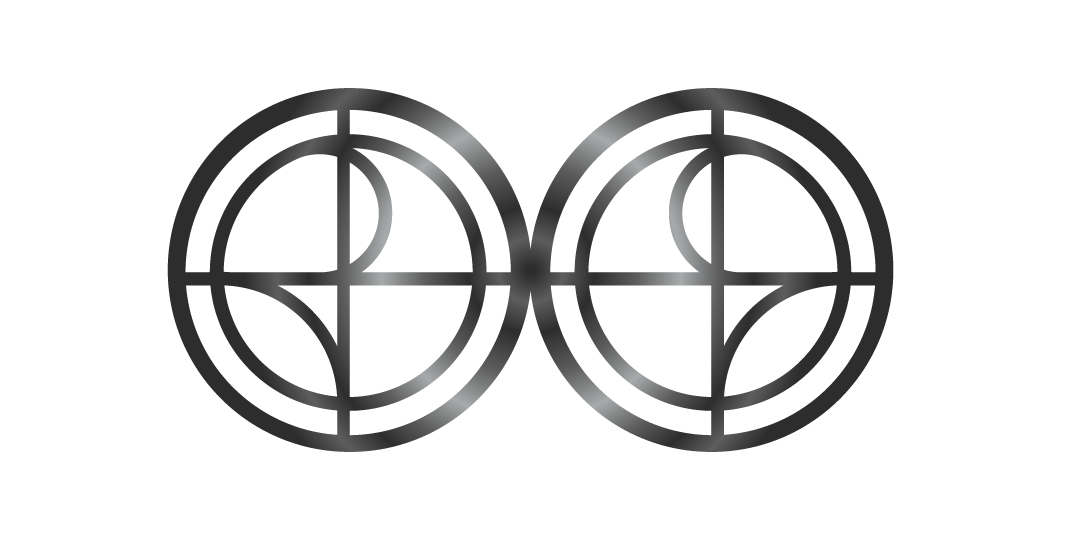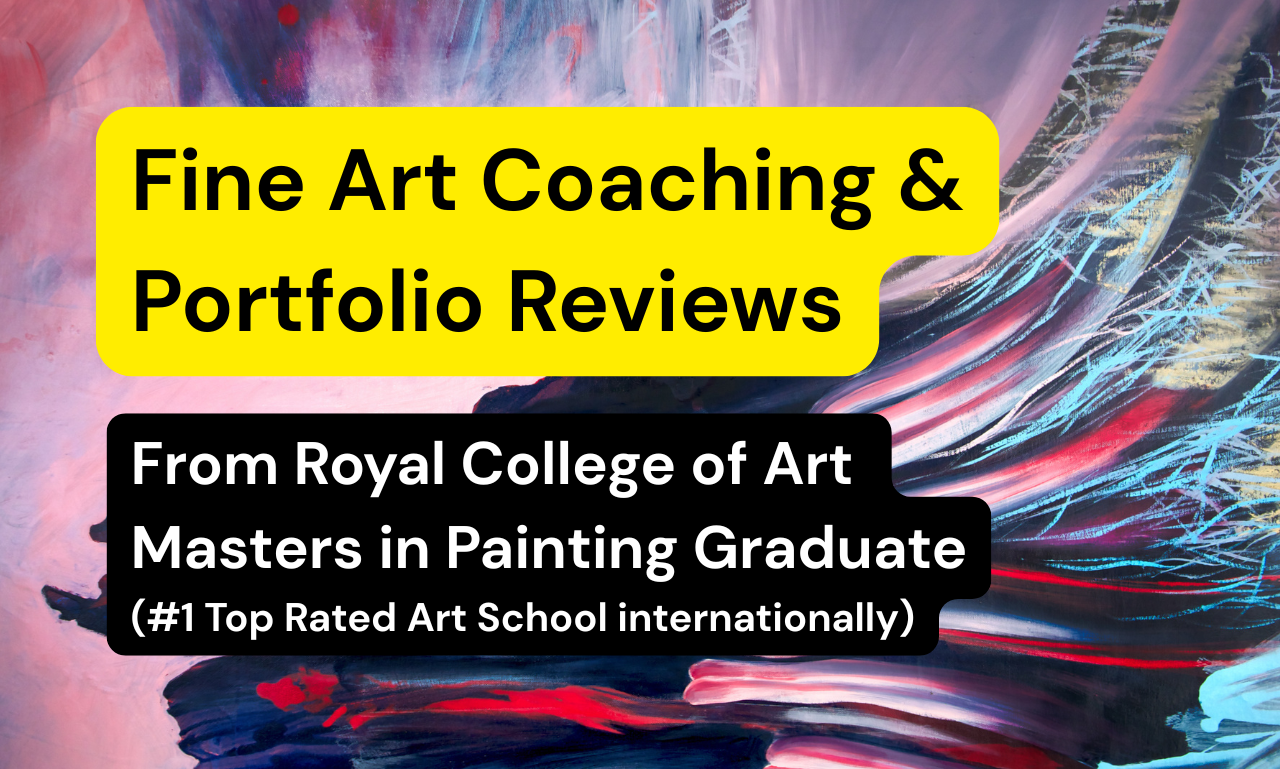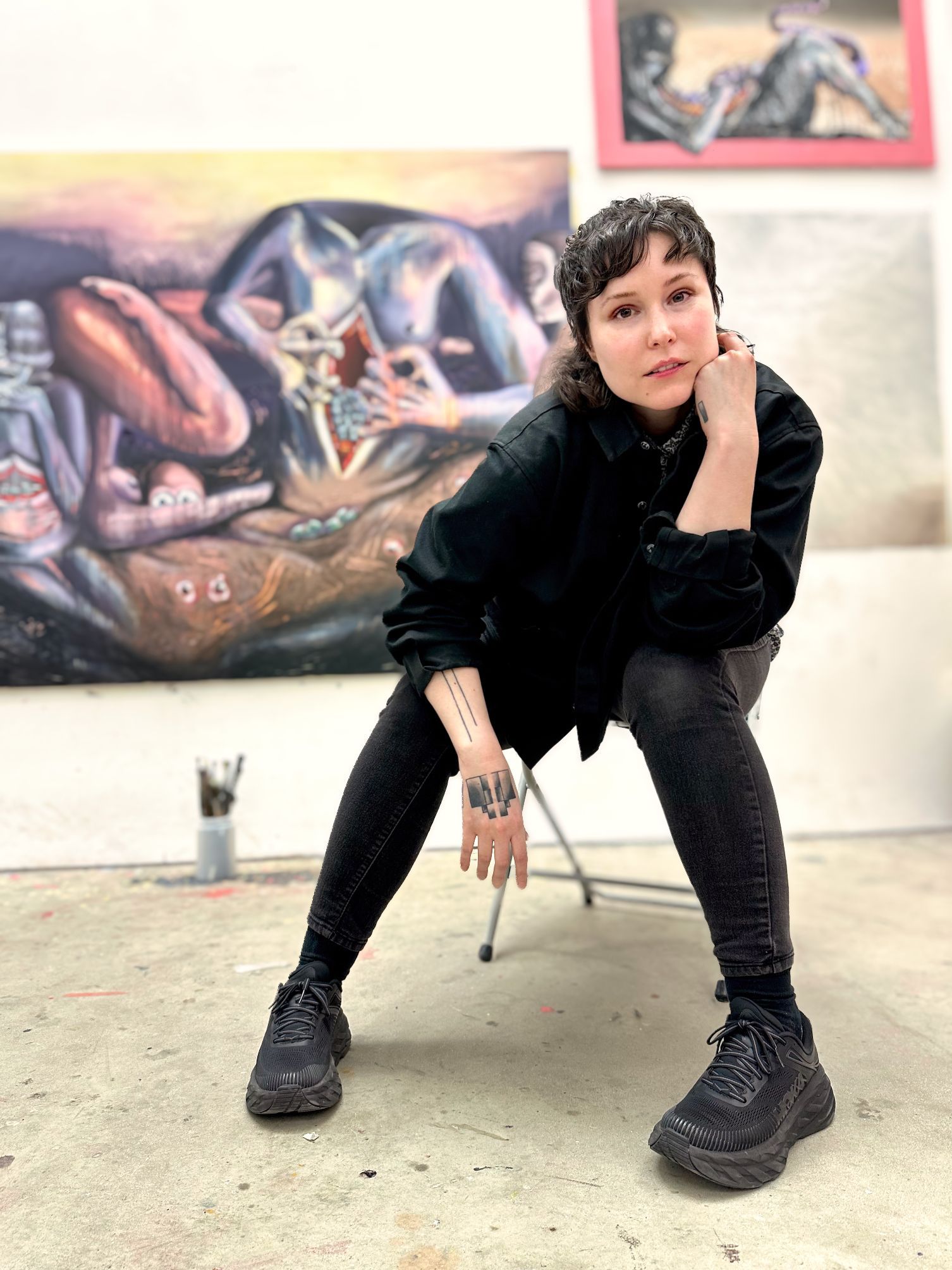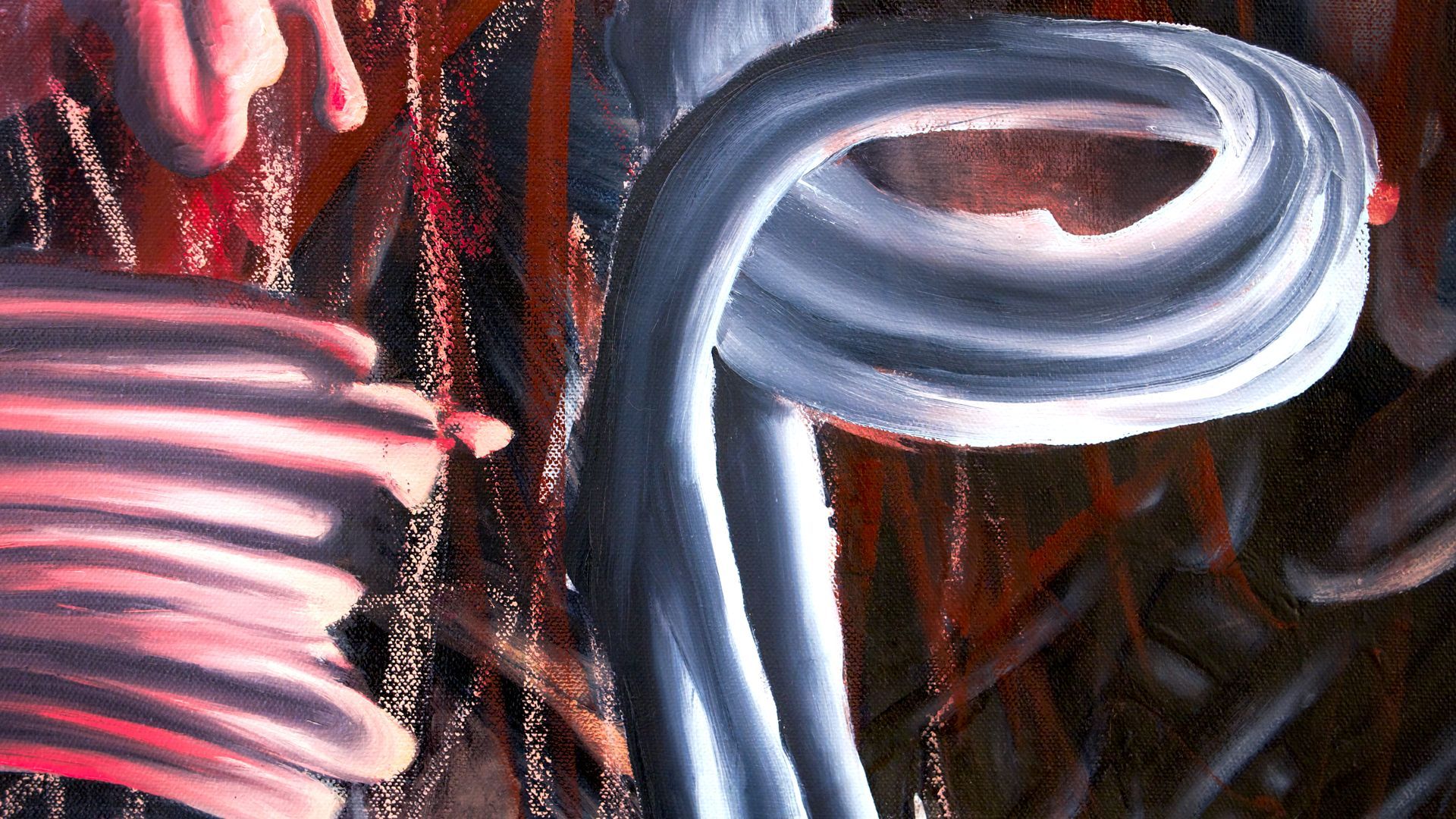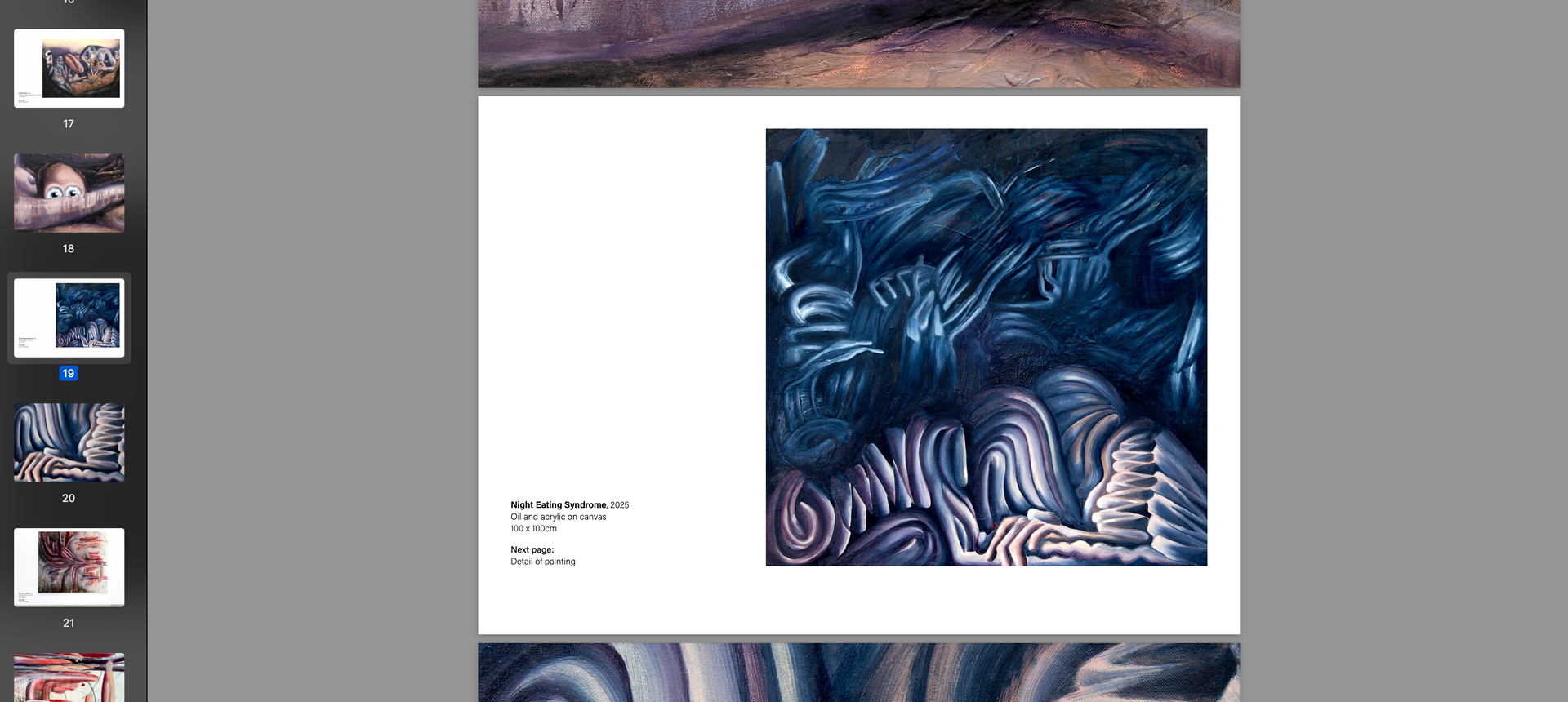Lala Drona is a Franco-American fine artist of Venezuelan heritage working between Paris and London. Her practice spans painting and video, probing the body not by appearance but by sensation: an interior landscape of memory, intervention, and transformation. She recently completed her Masters in Painting at the Royal College of Art.
RCA MA Painting: An Honest Review From a 2025 Graduate
A full breakdown of my experience in the Royal College of Art’s Painting MA—what I learned, how the course is structured, and tips for making the most of it.
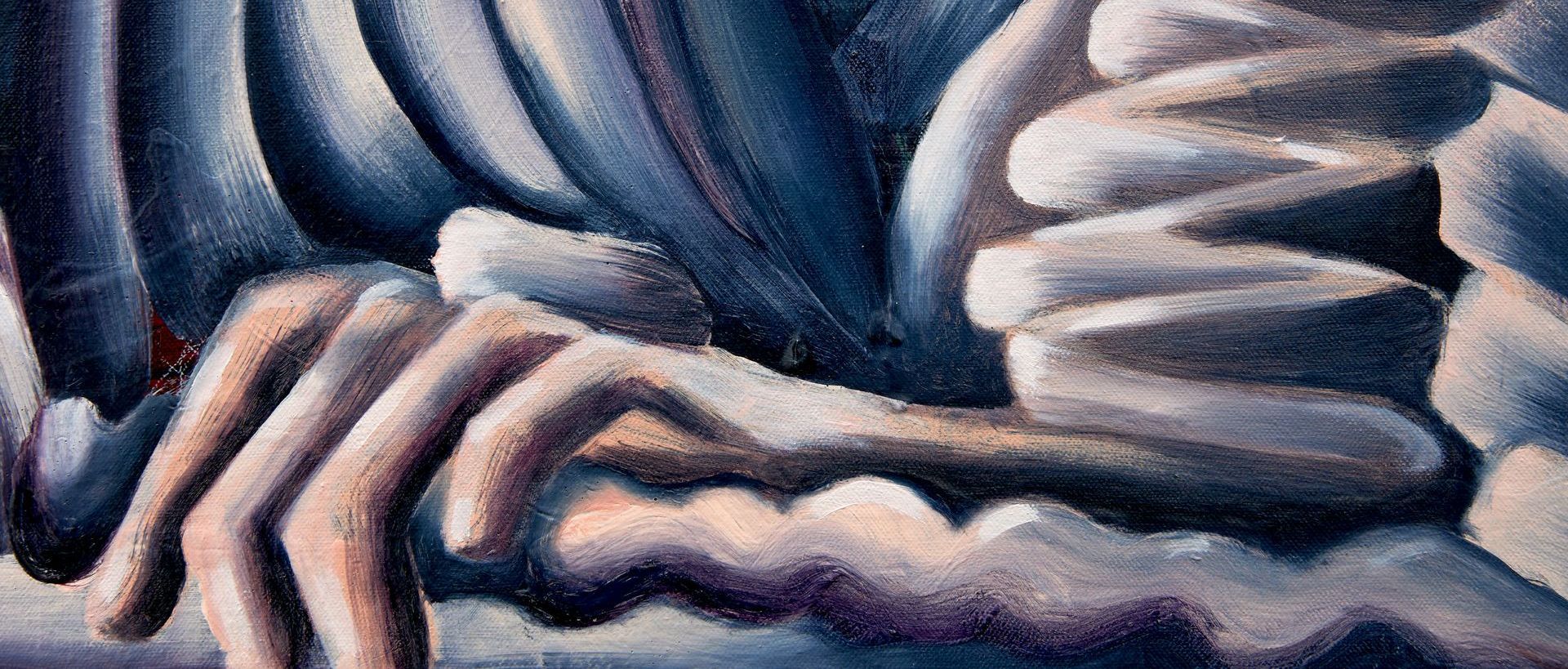
Introduction
I completed the MA Painting programme at the Royal College of Art in 2025. Before I applied, I searched everywhere for real, firsthand reviews—what it’s actually like to study painting at RCA, how the structure works, what challenges to expect, and how to make the most of the experience. Now that I’ve finished, I wanted to share my own experience for anyone considering the course.
This isn’t an official overview. It’s a reflection on what worked for me, what I learned, and how I approached the year. If you’re applying, planning to attend, or just curious, I hope this gives you something useful.
Going In With a Clear Plan
Going into the RCA MA Painting with a clear plan changed everything for me. I come from an interdisciplinary background—my past work often involved screens, video, and other media—but I made a conscious decision to leave all that behind and focus only on painting.
Before starting, I’d heard that in MA courses, you often learn more from your peers than from your tutors. Being surrounded by 150 painters felt like a unique opportunity to go deep. I didn’t want to rely on tools I already knew. I wanted to spend the year immersed in paint—expanding from within it, focusing on material, surface, and process—without falling back on installation or mixed media.
See my RCA paintings here
Starting with a Clear Intention
From the beginning, I committed Term 1 to experimentation. I tried wax, thick oil, new mark-making, texture-building, tool creation—anything I hadn’t pushed before. I gave myself permission not to have a final product. Just explore.
It wasn’t easy. There’s pressure to show what you’re about early on. People naturally want to understand where they fit in the group. It’s subtle, but it’s there.
The first couple of weeks were especially intense. Everyone was setting up, getting deliveries, figuring out their space. You could feel the tension. We were all just eager to start painting. The energy in the Painting Building was buzzing with anticipation.
Breaking Old Habits
Before RCA, my practice had become too controlled. I was working in a figurative, design-oriented way: lots of pre-sketching, mockups, clear plans. I think I was scared to fully let go in the paint.
But I knew something had to shift. Through tutorials, lectures, and honest conversations with peers, I started to approach painting differently. I began to treat the canvas as a relationship. Instead of trying to control it, I responded to what was happening in real time. That shift didn’t happen all at once, but by the end of Term 1, I had broken through something big.
Everyone has their own pace. Some people hit that shift in Term 2. Some right before the degree show. Some after. There’s so much packed into the year that you’ll probably keep processing it long after it’s over.
Understanding the RCA MA Painting Structure
The RCA Painting MA is self-led. If you want to use cross-departmental workshops like wood, metal, or photo, you have to take the initiative. Book your inductions online. Then go visit the workshops in person, talk with the technicians, and set up time. You need to be self-motivated, and you need to start early. No one does it for you.
In 2025, the programme introduced a personal tutor system based on studio groups. Your personal tutor follows you and your tutor group’s work throughout the year, which creates helpful continuity in the feedback. Each term includes three 1-to-1 tutorials: one with your personal tutor, one with an assigned tutor, and one you book yourself with any tutor of your choice. You can also catch tutors informally around the studios.
At first, the contact hours might feel limited. But as your work develops, they start to feel like enough. It becomes more about timing and how you use the conversations—not how many you have. Expect that you'll connect more easily with some tutors than others, but if open, you can learn something from all interactions. My advice: trust the rhythm. Go in open, with questions, but no fixed expectations. It all balances out.
Group Critiques and Finding Your Direction
Each term includes a group critique. A group of students installs work in a shared room, and a tutor facilitates a session where everyone responds to the paintings. These sessions ended up being some of the most valuable moments of the year—many different perspectives, fresh eyes, and honest feedback.
How you take that feedback is up to you. Personally, I realized that when I showed figurative work, the critique focused on composition, balance, and narrative. But I wanted to talk about emotional tone and presence. That disconnect helped me shift the work itself—toward something more abstract, more emotional, and less literal—so I could have the kinds of conversations I was actually interested in.
Make the Programme Work for You
This degree is what you make of it. You have to be proactive. But I will say, the Head of Programme was accessible and responsive. They listened to student feedback and made real-time adjustments where they could. Not everything can be changed—some systems are broader than the department—but I felt like our voices were heard.
The students who got the most out of the year were the ones who focused on what was available, not what was missing. RCA offers a lot: talented peers, supportive tutors, hands-on access to tools and workshops, and visiting artists who take the work seriously. I felt lucky to be in that world and to grow within it.
Don’t Miss the Visiting Lectures
The visiting artist lecture series and Philosophy lectures were some of the strongest parts of the programme. These weren’t filler events—they brought in real voices from the contemporary art world: artists, curators, and thinkers doing important work, and they pushed us to think more deeply about the painting process.
They weren’t mandatory, which meant the people who showed up genuinely wanted to engage. I went to as many as I could. Some of the most unexpected and valuable insights I had during the year came from those talks. Don’t skip them.
Written Assessments
Each term, we were asked to submit a written assessment outlining what we worked on and what influenced our practice during that period. These became a helpful way to reflect: to pause, take stock, and semi-close one chapter before starting the next. We received feedback on the write-ups, which helped shape our direction moving forward.
Throughout the year, we were also asked to write (and rewrite) our artist statement on a regular basis, often monthly. This was a reminder that the writing and the art-making go hand in hand. Both are evolving parts of the practice, and both can inform one another in unexpected ways.
At the end of the year, we submitted a final essay about our practice, including relevant references, and turned in a final portfolio that included our artist statement. We also had a Viva, where we spoke directly to examiners about our development over the year.
Alongside the lectures and tutorials, the written components kept the theoretical and conceptual level of the course high. They helped solidify a creative practice that was grounded in both making and thinking, fueling the work while also helping us speak about it with more clarity and depth.
RCA Degree Show: What to Expect
The year builds toward a public-facing degree show, where your work is shown to a wide audience. RCA came through with visibility: there were VIP preview days before the public opening for curators, gallerists, collectors, and other art-world professionals. There was also a private view for friends and family ahead of the launch.
Talking to people about my work—ranging from artists to general visitors—was one of the most important learning moments of the year. Seeing what resonated, what didn’t, and hearing how different people responded gave me insight that I’ll carry forward.
Another important part of the show: after installation, RCA invited a panel of industry professionals to critique the exhibition in a public session in the lecture theatre. We got to hear their honest impressions and ask them questions directly. It was a rare opportunity to see how the work landed outside the RCA bubble.
The lead-up to the show is intense. It’s probably the most stressful part of the course. I found that students who had attended RCA Painting shows before starting had a big advantage. They already knew what the space looked like, how people installed, and what kind of pressure to expect. If you’re applying or about to start the programme, go see a show ahead of time if you can. It makes a real difference.
You can approach the degree show however you want. Some students arrived on day one with a specific project in mind, and spent the year executing it. Others, like myself, followed a more open process—painting throughout the year and selecting work closer to the end. Both approaches are valid. It all comes down to your personal goals for the programme.
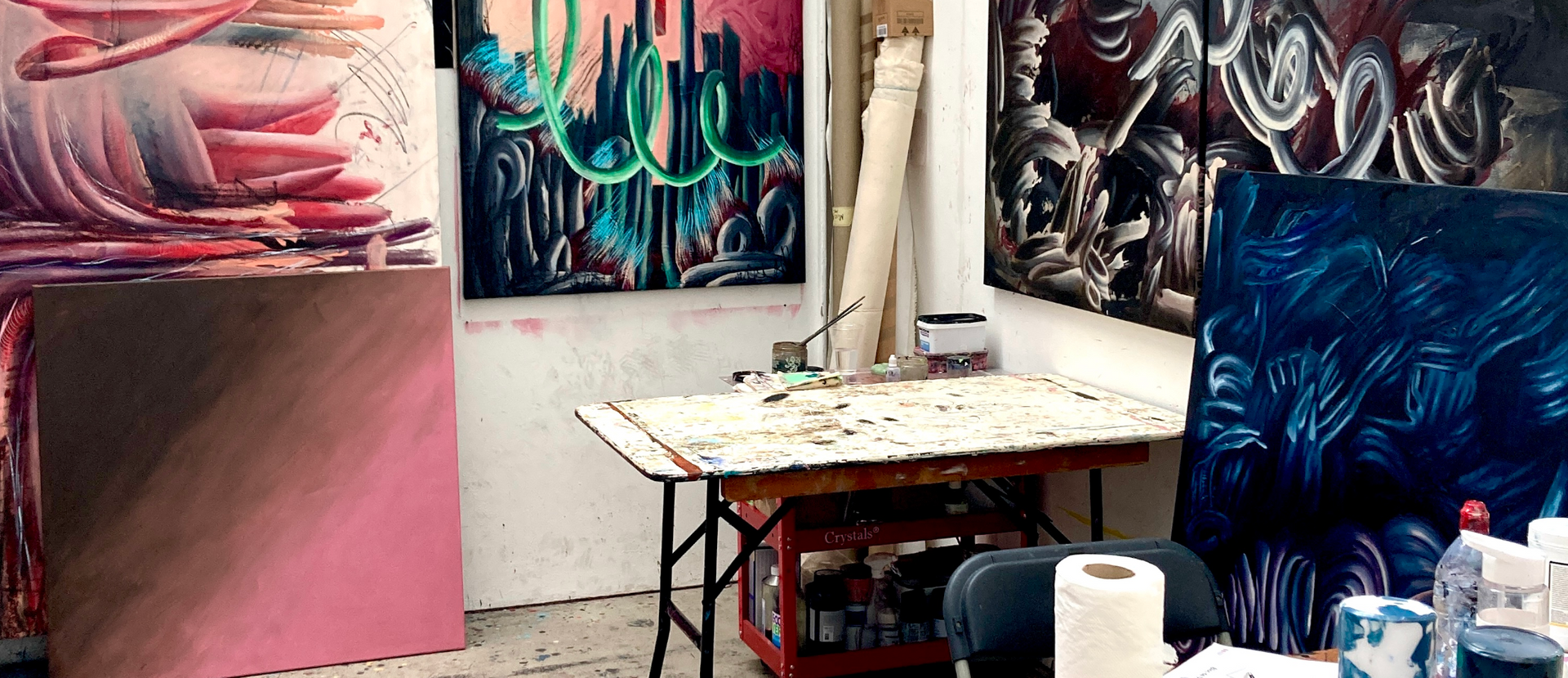
What Comes Next
Now that the year is over, I’m heading back into the studio on my own. I feel like my experience at the RCA helped me break down and then reconstruct a more robust, sustainable practice—one that feels aligned with who I am and where I want to go. I'm more confident in my own rhythm and pacing, and I feel like I’ve developed a strong body of work that holds professional, material and conceptual weight.
Whether you’re preparing to apply or just curious about what studying painting at RCA is really like, I hope this helped fill in some of the gaps. For me, it was a transformative year—not because it gave me answers, but because it pushed me to keep asking better questions. If you'd like to see my tips on preparing an MA Fine Arts Portfolio, check out
this article.
Feel free to reach out or follow my work on instagram
@laladronaofficial
💪💪💪 I also do coaching/critiques: Reach out for 1-1 sessions from me here.
